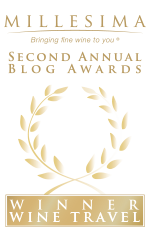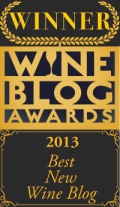Last week, a Beaujolais disciple emailed to say he would sic Ted Cruz on me if I recommend anything other than ‘merican wines on Thanksgiving, and this guy loves Gamay (and is a Canadian). But at the risk of offending patriotic readers (and inviting that Texas hound to track me down), I am committing to the following statement: Drink Cru Beaujolais on Thanksgiving.
While this is neither the first nor last time you’ll read “Beaujolais goes great with turkey! Stuffing! Football!” it’s a point worthy of unbridled proselytizing: Cru Beaujolais, not to be confused with the basic Beaujolais or the marketing machine known as Beaujolais Nouveau, offers absurd — nay, criminal — value, given its range of expressions, vibrancy of fruit, layers of complexity, food-friendliness, and sheer pleasure for a very, very low price.
Unfortunately, in the short term, any discussion of Beaujolais requires a preface for clarification, like Australian Shiraz. “Yuck,” you say? Exactly. The stigma attached to it — what people think Beaujolais is — and what Beaujolais can actually be are continents apart. Here’s a quick rundown of why.
Beaujolais is a region in central-eastern France (actually, the southern tip of Burgundy) which produces light-bodied red wines from the Gamay grape (Gamay Noir à Jus Blanc, in full). Akin to Nebbiolo from Piedmont (Italy), the wines have an inimitable quality that comes from the unique match of grape to soil to climate, a/k/a terroir. Gamay just doesn’t taste interesting when grown elsewhere (except, perhaps, in a small pocket of the Loire). But unlike Barolo or Barbaresco, the heralded villages of Beaujolais — e.g., Morgon, Fleurie — are foreign, in both name and concept, to the majority of consumers who’ve mostly only known the wine as Nouveau.
In the medieval villages of Beaujolais, a long tradition of celebrating the harvest with freshly fermented wine took place annually in November. The wines were drunk locally and were rarely, if ever, exported. Michele Peters of NYC-based David Bowler Wine, an importer and distributor with a particularly strong portfolio of small-production Cru Beau, reflects on the tradition: “My first experience with Beaujolais Nouveau was in Paris. It was always a fun day and involved trying the newly released wines with friends and noshing on dried sausages.”
But a quaint custom with honest intentions became twisted into a marketing gimmick that would ultimately reduce perception of Beaujolais down to a synonym for cheap, young, mediocre juice celebrated more for the party than the wine (like a vinous vodka). Vignerons were not innocent victims: The willingness of many to compromise farming and winemaking standards for a chance to sit at the global table besmirched their own reputation.
Despite its connotation, the question of whether Nouveau has helped or hindered consumer awareness of Beaujolais remains up for debate. Lelañea Fulton, wine director for the Dirty French, believes “it overshadow[s] Cru Beaujolais and creates an ignorance surrounding Gamay Noir and the terroir of Beaujolais. Like Liebfraumilch of Germany, the extensive distribution of what can’t be seen as anything more than a lipstick wine can have a negative impact on the general public.”
Paul Grieco of New York’s Terroir wine bars, on the other hand, thinks “nothing overshadows the Crus of Beaujolais. Since the majority of us cannot afford the Grand Vin from further north…we can still get our Burgundian fix from the original Burgundian grape, Gamay.”
Peters finds a positive aspect of the Nouveau release each year: “It gives smaller retailers who rely on customer education a chance to teach [them] about the variety of Crus available.”
Which brings us to the 10 Crus of Beaujolais. Wines from these villages sit at the top of the quality hierarchy (of which Beaujolais, the region, has three tiers), each village offering an expression of Gamay considered distinct enough to warrant its name as the appellation. The village names are: Brouilly, Chénas, Chiroubles, Côte de Brouilly, Fleurie, Juliénas, Morgon, Moulin-à-Vent, Régnié, and St.-Amour. Immediately below Cru Beau is Beaujolais-Villages, and at the bottom rung sits entry-level Beaujolais.
Why are these wines still relatively undiscovered? First, they are labeled with their village names (although “red Beaujolais wine” is found in smaller print on the label), so consumers need to ask their retailer for help or have a few names memorized. Second, recognition takes time, especially in light of the region’s recent history. Finally, better vintners produce fewer bottles, so it’s harder to find. They are focused on lower yields, less manipulation of the wine, and expression of terroir. This philosophy makes for interesting, soulful wines, but is incompatible with large-scale production.
Peters has noticed an uptick, though, in interest: “Beaujolais sales seem to increase every year at every level, Nouveau, Villages, and Cru. Cru delivers the best value because you can spend $15 to $30 a bottle and keep the wines for years.”
Fulton, too, has seen an escalated interest in Cru. “I have never been asked for Nouveau…I find that our list tends to attract consumers who want to experience different types of Cru and want to discuss it to understand the intricacies of it.”
Cognizance of Cru Beau is inevitable, given its affordability, quality, and utter deliciousness. For Fulton, “there is no other region that can produce Gamay Noir so boldly and beautifully as the Cru of Beaujolais. The amount of variation in the characteristics of the grape varietal from Cru to Cru is immense and stunning.” Sounds like a reason to drink Cru Beau not just on Thanksgiving, but any day of the year.
Here’s my guide to the ten Crus, including where to buy it and drink it around NYC.

























